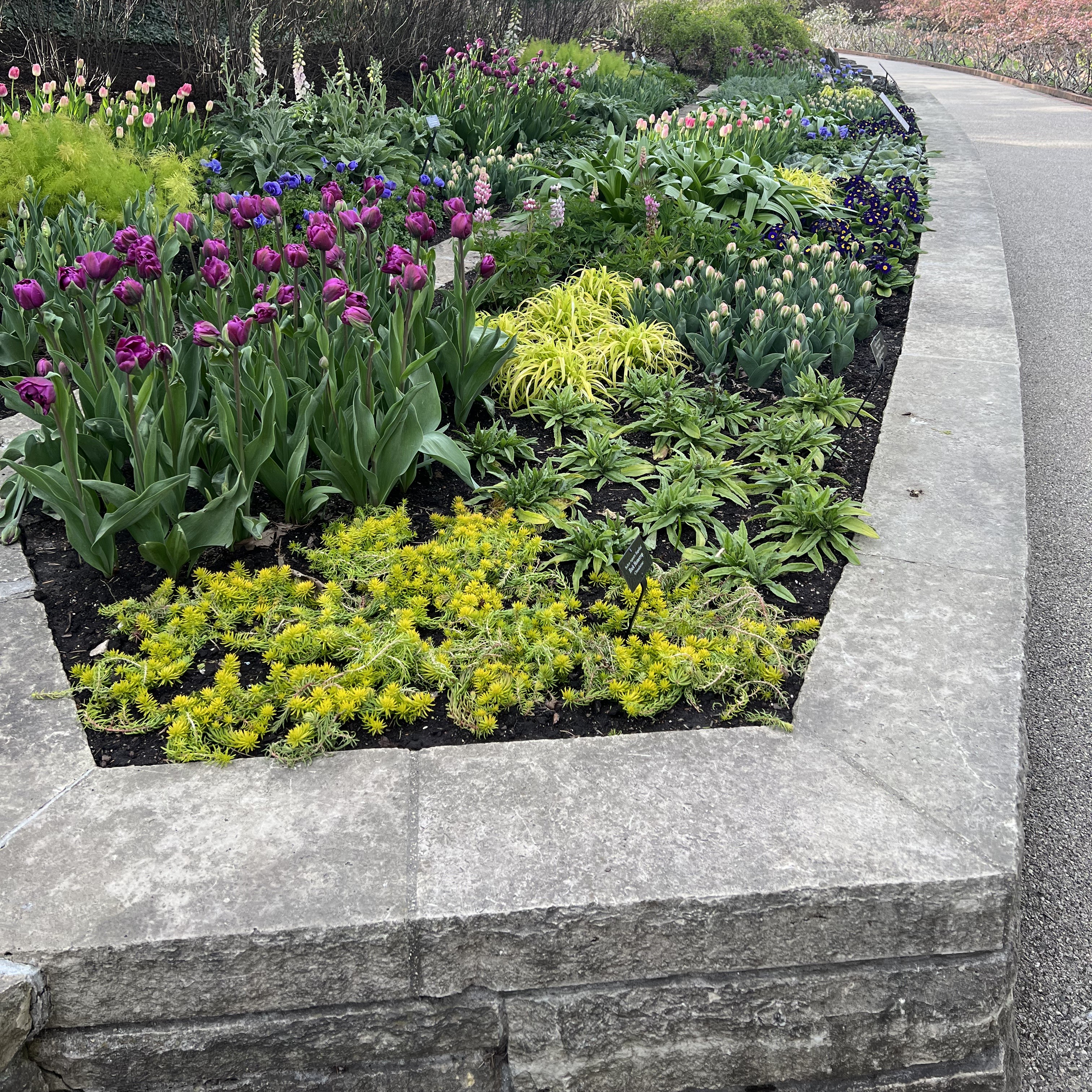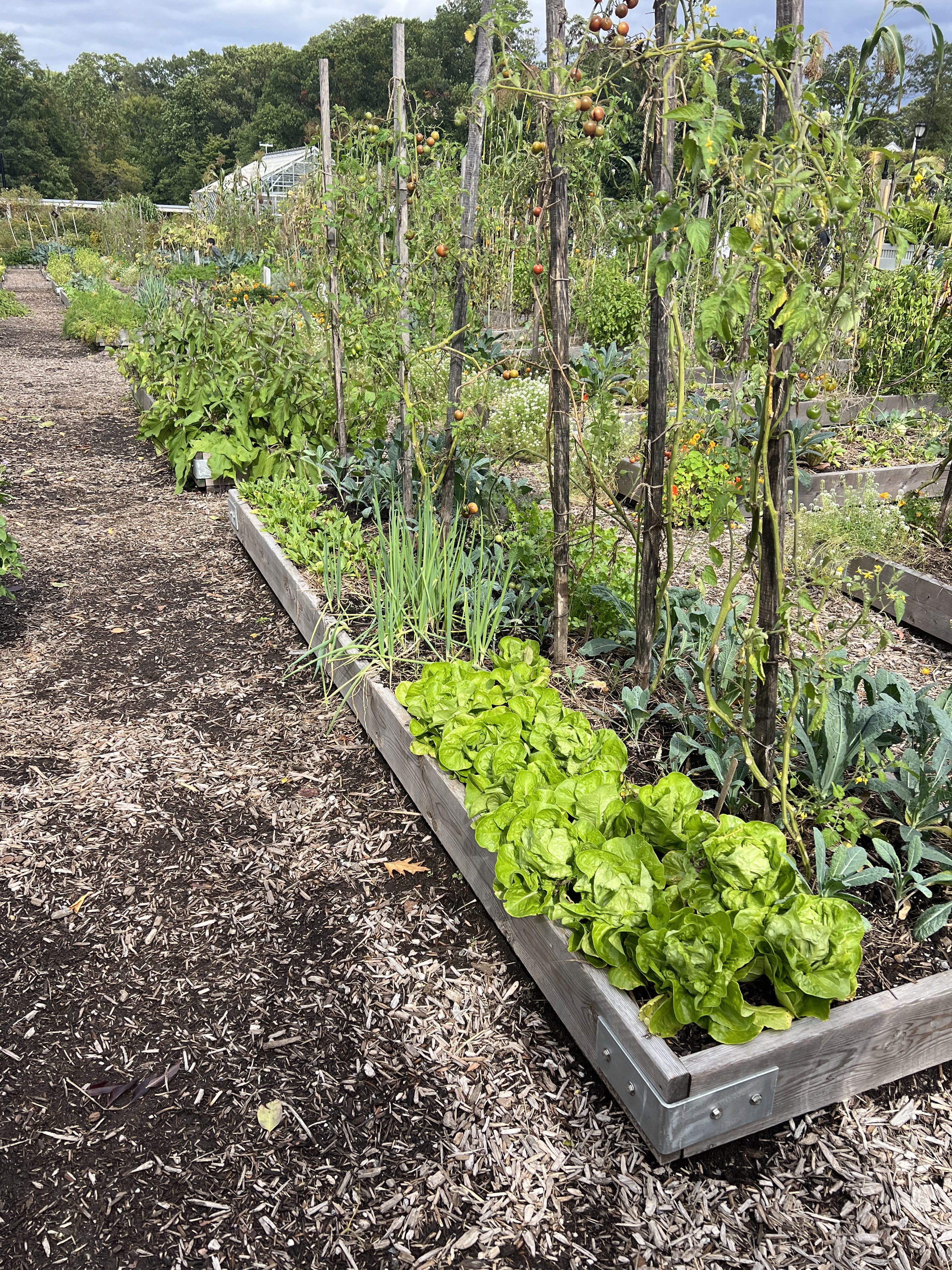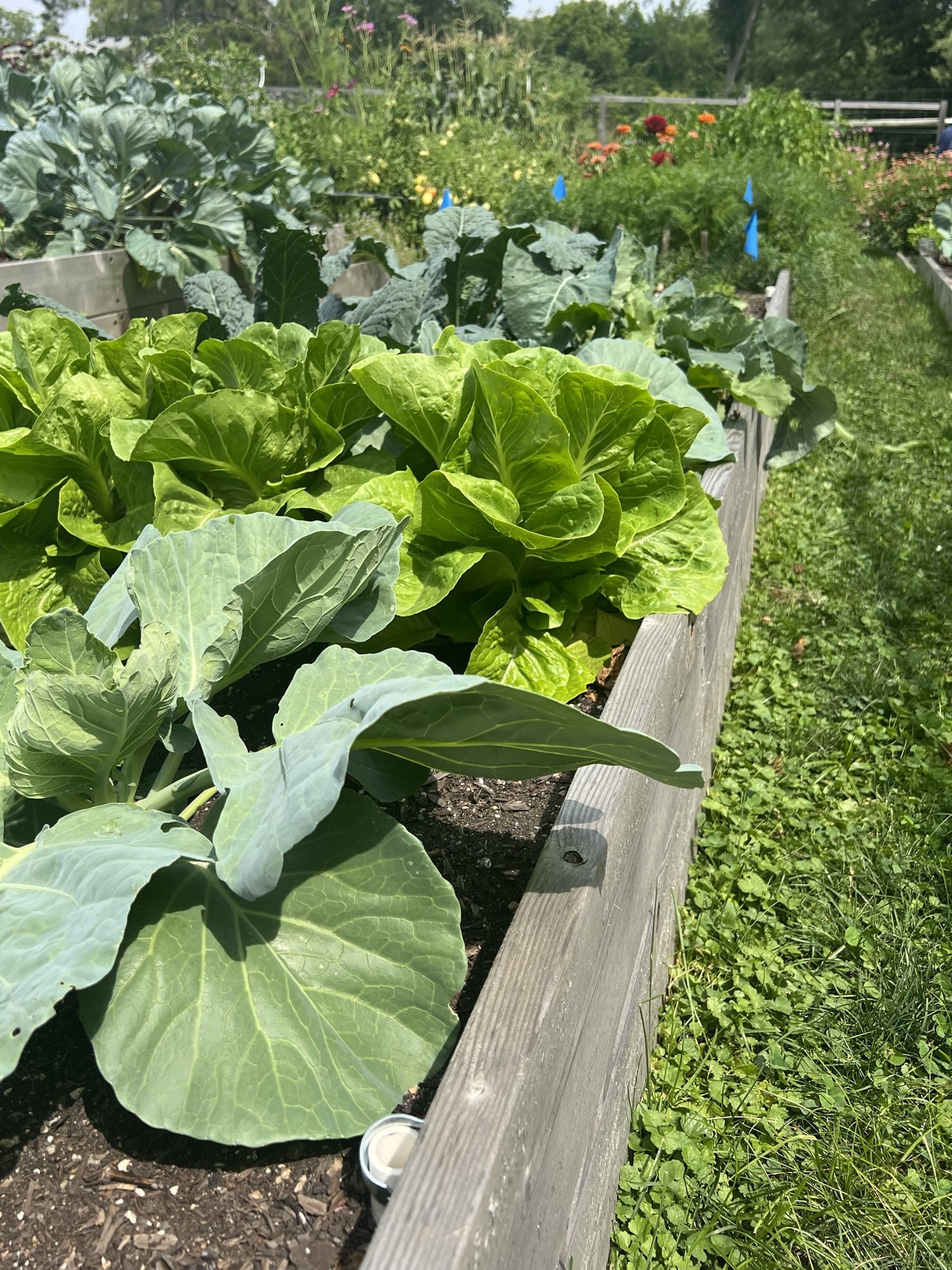Raised beds have become popular features in the home landscape. They are both functional and attractive and can be used to grow flowers, vegetables, and small fruits.
Advantages | Types | Site Selection | Wall Materials | Size | Soil | Construction | Gardening in Raised Beds | | More Information
Advantages of Raised Beds

Raised beds provide several advantages over conventional garden areas. Wet, poorly drained sites can be improved by constructing raised beds. A properly prepared raised bed increases drainage, thereby promoting plant growth and increasing crop yields. Additionally, raised beds dry out and warm up earlier in the spring, allowing earlier planting. Raised beds are more convenient for elderly gardeners or physically challenged individuals with difficulty bending to the ground. The raised height of the garden enables these individuals to continue their gardening activities.
While generally minor, raised beds do have some disadvantages. Raised beds dry out faster than level garden sites. Accordingly, they have to be watered more frequently in dry weather. Initial construction of the raised bed may take more effort than maintenance of the conventional garden.
Types of Raised Beds
Raised beds may be permanent or temporary structures. Temporary raised beds are shallow beds (6 inches or less in height) constructed within the existing garden. After the garden is tilled in the spring, the loose soil is raked into raised beds.
Permanent beds are usually higher than 6 inches tall, have side supports, and are built to lastmany years.
Constructing Permanent Raised Beds

Site Selection
Raised bed planters are usually in sunny locations because most vegetables and flowers require at least six hours of full sun for peak performance. Choose a level site to simplify the building process. A north-south orientation for the planter is best for low-growing crops.
Be sure the garden is in a location convenient for maintaining and harvesting. Near the house or walkway is beneficial. A water supply with a lightweight hose should be easily accessible. Automatic or trickle irrigation systems may be worth the investment for permanent planters.
Wall Materials
The walls of permanent beds can be constructed of decay-resistant wood (such as cedar or redwood), concrete blocks, rock, or brick. Treated wood can also be used, but depending on the treatment, the inside may need to be lined with woven geotextile fabrics that allow water to drain through but separate the soil/plant roots fromabsorbing potentially toxic chemicals.
Accessibility for mobility-challenged individuals can be improved by building the wall with a permanent built-in ledge so people can garden from a seated position on the wall.
Size

Raised beds should be constructed so an individual can reach everything in the bed without stepping into it. If a raised bed is placed against a building, fence, etc., making it accessible from only one side, the maximum width should be 1 1/2 to 2 feet (i.e., approximately arm’s reach). Forward reach from a wheelchair, without bending, is about 30 inches. Beds accessible on both sides can be 3 to 4 feet wide.
The length of the bed is determined by space limitations, personal preference, and convenience.
The height of the raised bed depends on the uses and the materials available. Heights typically range from 6 inches to 20 or more inches. 11 inches is a common height as it's the height of two 2x6 boards (the actual dimensions of a 2x6 board are 1.5 x 5.5 inches). Generally, higher heights will be easier for the gardener to work in but require more soil to fill them. Raised beds for a wheelchair user should be about 2 to 3 feet high.
If constructing several raised beds, the pathways between adjacent beds should be wide enough to accommodate garden equipment (e.g., a wheelbarrow or cart, ~3’ wide).
Soil
Raised bed soils should be light and well-drained. An excellent soil mix can be prepared by mixing equal parts topsoil, organic matter (well-rotted manure, compost, or peat), and coarse sand. The amount of soil needed can be calculated by multiplying the length, width, and height of the wall materials. Online calculators can make this calculation easy.
Test the soil mixture for nutrients and pH. Add lime or sulfur as needed to bring the pH to about 6.0 to 6.5. Incorporate a slow-release fertilizer if indicated by the soil test.
Construction

Secure the wall materials firmly to prevent bowing or movement outward. Reinforcing the corners is of particular importance to prevent wall failure. Set the wall materials so the top is level.
Before filling raised beds, remove the grass sod (if present) and work up the existing soil with a rototiller or spade. Add a few inches of the soil mix, then incorporate it into the existing soil. Continue to add and incorporate additional soil mix until the raised bed is filled. Incorporating the soil mix into the existing soil prevents the formation of distinct layers in the raised beds. Distinct layers of soil impede water movement and discourage root growth.
When filling the bed, grade the soil so that it slopes slightly away from the center of the bed to the edge and away from adjacent structures. Allow space for 1 to 2 inches of mulch on top of the soil. Often, the soil will settle after adding it to the bed, creating a lip or edge to contain the mulch.
Gardening in Raised Beds
Annual flowers and vegetables are well-suited for raised beds. Vegetable cultivars with compact growth habits are often desirable but not required. Planting, weeding, mulching, and other gardening activities look essentially the same as in more typical garden beds. Because they are elevated, the soils will warm quicker in the spring, allowing for earlier planting. The well-drained nature of raised beds may also mean that more frequent irrigation will be needed.
Perennials (both herbaceous perennials and woody shrubs) can sometimes see issues with winter hardiness in raised beds, especially those with relatively small soil volumes or those that are very tall. Unlike the soil in the ground which freezes gradually allowing the plants to gradually move into dormancy, the soil in raised beds can freeze quickly causing more stress to the roots of these plants. This stress can lead to more winter die-back or death of perennial plants in raised beds over winter. An insulating layer of mulch can help plants better overwinter. Place the mulch in late fall just as the ground starts to freeze (often early to mid-November in much of Iowa). Remove the insulating mulch layer in early spring (mid to late March).
Elevated & Tabletop Gardens

Tabletop garden planters make gardening accessible for gardeners of all abilities. These structures allow much of the activity to be done from portable chairs, wheelchairs, benches, or scooters. Tabletop gardens also help the visually impaired by bringing the garden closer to eye level.
Sizes can be adjusted to accommodate the reach of an individual gardener or a group of gardeners, as well as the space available. Recommended width is 36 to 48 inches. The suggested height is 30 to 33 inches to the top of thebed. Most plants need at least 6 to 12 inches of soil for good rooting and growth. Planting bed depth should allow for 1 to 2 inches of mulch on top of soil. Drilling 1/2-inch holes every 6 inches across the base promotes good drainage. Lining the planting bed bottom with a piece of landscaping fabric before adding the soil mix allows only the water to drain through the holes. Build these elevated gardens with sturdy materials, as the soil and plants can get heavy, especially after being watered. Secure the footings into the ground with cement for best stabilization.
More Information
- Therapeutic Gardening: Creating Raised Bed Planters(publication)
- How to Kill Grass to Create a New Garden Bed
- Planting a Home Vegetable Garden
- Where to Put Your Vegetable Garden
- Small Plot Vegetable Gardening
- Container Vegetable Gardening




